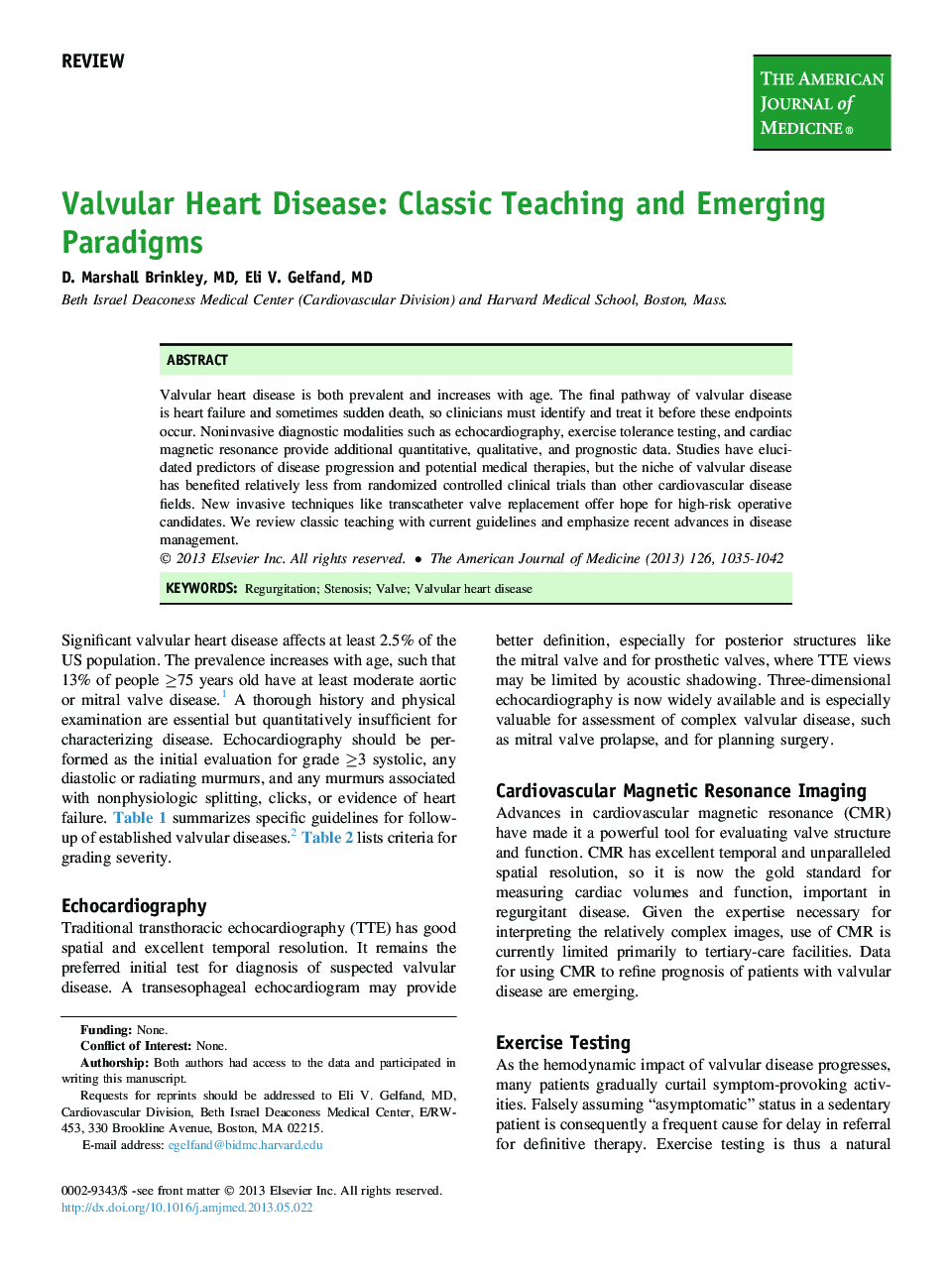| Article ID | Journal | Published Year | Pages | File Type |
|---|---|---|---|---|
| 2715421 | The American Journal of Medicine | 2013 | 8 Pages |
Valvular heart disease is both prevalent and increases with age. The final pathway of valvular disease is heart failure and sometimes sudden death, so clinicians must identify and treat it before these endpoints occur. Noninvasive diagnostic modalities such as echocardiography, exercise tolerance testing, and cardiac magnetic resonance provide additional quantitative, qualitative, and prognostic data. Studies have elucidated predictors of disease progression and potential medical therapies, but the niche of valvular disease has benefited relatively less from randomized controlled clinical trials than other cardiovascular disease fields. New invasive techniques like transcatheter valve replacement offer hope for high-risk operative candidates. We review classic teaching with current guidelines and emphasize recent advances in disease management.
